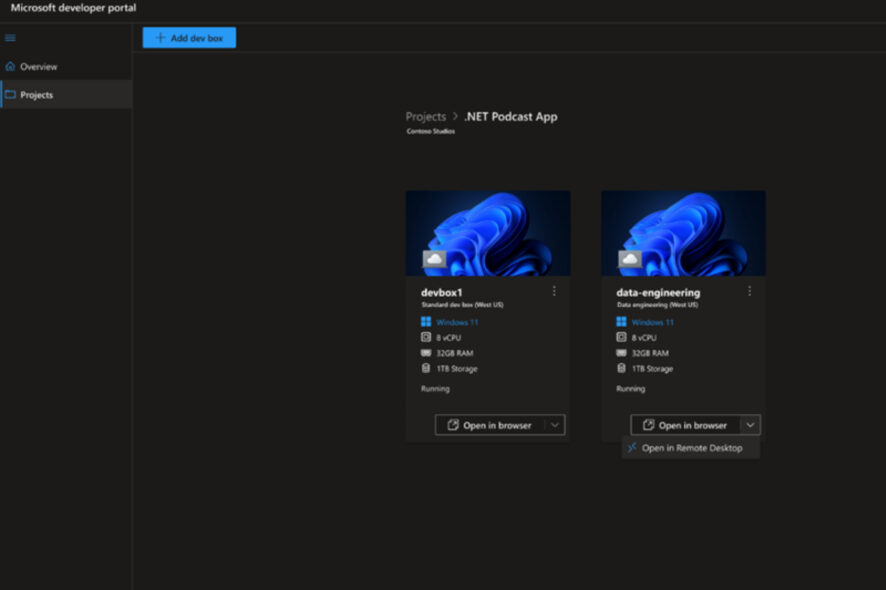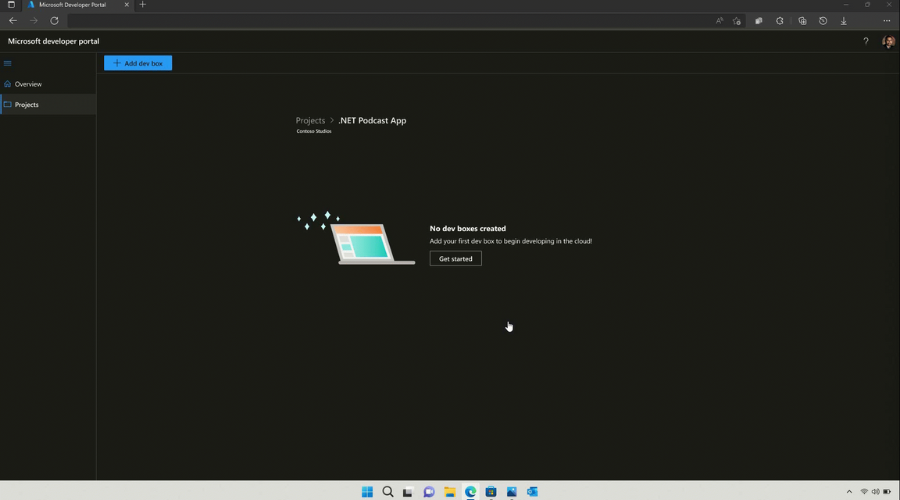Microsoft Dev Box has finally reached Public Preview
3 min. read
Published on
Read our disclosure page to find out how can you help Windows Report sustain the editorial team Read more
Key notes
- You will surely be happy to hear that Microsoft's Dev Box is now in Public Preview.
- Dev Box is actually here to offer developer-ready workstations hosted in the cloud.
- Feel free to create your own dev boxes whenever you need to quickly switch projects.

Die-hard Microsoft users will surely remember that Microsoft announced Dev Box three months ago, a tool that enables developers to take advantage of pre-configured environments to write code without worrying about architecture.
That being said, you will also remember that back then this service was only available in private preview with a waitlist.
All that is about to change, however, as Microsoft’s Dev Box has finally hit public preview today, and we’re about to check it out.
What can we do with Microsoft’s Dev Box?
Just in case you missed it at the time, the general idea behind Dev Box is to offer developer-ready workstations hosted in the cloud.
Of course, these integrate with Azure Deployment Environments, Intune, and Endpoint Manager, so users can get up and running in no time with existing project templates.
By using this tool, developers can actually focus on writing the code only they can write instead of trying to get a working environment that can build and run the code.
All the dev boxes are ready-to-code and preconfigured by the team with all the tools and settings developers need for their projects and tasks.
Furthermore, just in case you were wondering about this, developers can create their own dev boxes whenever they need to quickly switch between projects.
This also works when they need to experiment on a proof-of-concept or kick off a full build in the background while they move on to the next task.
Yes, we’ve anticipated your next question and we have the answer. Access to these Dev Boxes can be controlled with Azure Active Directory (AAD).
Needless to say, different devices can be spun up for various use cases, and start from 4 vCPUs/16GB RAM and go up to 32 vCPUs/128GB RAM.
Developer flexibility and productivity can’t come at the expense of security or compliance. Microsoft Dev Box builds on Windows 365, making it easy for IT administrators to manage dev boxes together with physical devices and Cloud PCs through Microsoft Intune and Microsoft Endpoint Manager.
That means that IT admins can set conditional access policies if they want to ensure users only access dev boxes from compliant devices while keeping dev boxes up to date.
This can be done using expedited quality updates to deploy zero-day patches across the organization and quickly isolate compromised devices.
Also keep in mind that, since this is a managed service with a pay-as-you-go (PAYG) model, the pricing is based on hourly usage and is highly dependent on your resource consumption.
Of course, automation can be implemented to warm up a Dev Box at the start of the day and have it be halted when it’s idle near the end of the day.
So, that being said, know that with Dev Box now being available in public preview, interested organizations can head over to Azure Portal to download their preferred environments.
Were you waiting on the opportunity to use Microsoft’s Dev Box? Share your thoughts and opinions with us in the comments section below.










